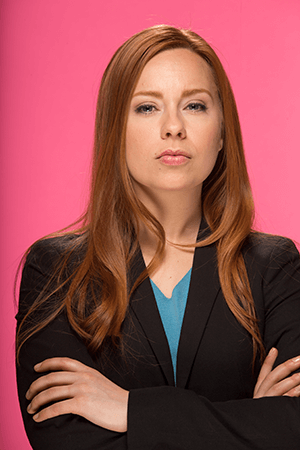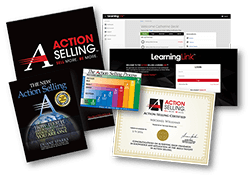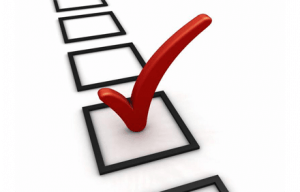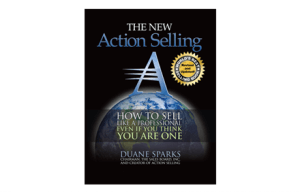
A WORD FROM DUANE SPARKS
Dear Sales Executive:
“Why do I need to know this?” That’s the first question you need to answer whenever you attempt to teach something to adults.
In the previous edition of eCoach, I explained what genuine customer loyalty is and why it is crucial to teach your company’s people how to create it—not just your salespeople, but every customer-contact person in the organization. The winning formula is to turn service people, technicians, and professional staff into what I call Customer Relationship Professionals (CRPs).
Here’s the catch: It’s one thing to teach the skills of loyalty-generation. It’s something else to have people learn and apply those skills. When adults ask why they need to know this, “Because I say so” won’t cut it.
A whole branch of educational theory supports this, and any training you conduct had better be grounded in that knowledge. If you think training programs are interchangeable, think again. Please read on.
Have a question about how to turn your company’s people into Customer Relationship Professionals?
“Ask The eCoach“.
We are committed to your professional success.
Duane Sparks
Author of Action Selling ®

“WHY DO I NEED TO KNOW THIS?”
It seems as if every time I come up with a new, brainy idea, I find out that someone else already had the idea. Sometimes the originator turns out to be the leading authority on the topic.
I thought I had original thoughts about adult learning until I ran into a renowned American educator named Malcom Knowles (1913-1997). Knowles developed an entire set of concepts that describe the fundamental differences between teaching adults and teaching children. He even gave his adult-learning principles a name—andragogy—to distinguish them from the principles of pedagogy.
I think I’d have come up with a better name, but I can’t argue with Knowles’ Five Basic Assumptions about Adult Learners:
- Self-Concept: Adults learn best when they use self-directed methods to discover new knowledge.
- Experience: Adults rely on their own past experience, even when that means repeating mistakes. Breaking a habit may be the hardest thing a human is ever asked to do.
- Readiness to Learn: They demand that material should be relevant and impactful to their jobs.
- Orientation to Learning: The material must be connected to current problems the student experiences.
- Motivation to Learn: Why do I need to learn this? If you don’t have a good answer, don’t waste time trying to teach them anything.
Silly me, I thought I was the guy who figured this out. Okay, I’ll give Malcom his due. But, my invention of the certification plan for the Customer Relationship Professional (CRP) reinforces my claim to be the first to apply these principles to the training of sales and service people. And even if not the first, then the best—if I do say so myself.
The only thing lacking in Knowles’ work is validated proof that his concepts actually work. That’s where I’m ahead of him.
CRP TRAINING: ROLL YOUR OWN OR BUY FROM AN EXPERT?
I call it accountability for learning. It is based on the age-old principle that “What gets measured, gets done.” In learning, “What gets measured gets learned.” In 1995, my company invested in the development of a validated assessment that tracks both the quantity of learning from a training experience and the learners’ ability to apply newly learned skills on the job. The assessment is not a survey. It is based on fact, not opinion.
Introducing accountability for learning impacts all five of the Adult Learning Assumptions. For example, students are more “motivated to learn” when they know they’ll be assessed on their learning. And students are more “oriented to learn” when they are made aware that they have deficiencies. (We create that awareness with a pre-learning benchmark assessment.) Each of the five assumptions can be best addressed if a validated measurement system is used.
Accountability alone isn’t enough, however. Even if all five assumptions are addressed, training can still fall on its face. And, the trainer’s task isn’t getting any easier. Experts from the past, including Malcom Knowles, couldn’t have anticipated the myriad distractions that technology presents to humans today. I recently heard a new term called “phubbing.” Derived from “phone” and “snubbing,” it refers to the act of ignoring the people you’re with while you focus instead on your smartphone. This now happens in learning environments, just as it does elsewhere.
For training to stick at all, the learning has to be REAL. But to combat phubbing and a hundred other obstacles, learning also has to be FUN. To be made aware of their own deficiencies, students must recognize themselves in a training program’s “wrong way” scenarios. That means the scenarios must be relevant. But, the scenarios also need to be entertaining and fun, or students won’t be drawn to them.
What it boils down to is that an effective training program has a lot of moving parts—a lot of gears that need to mesh. If you think you can whip up a great training program on your own that will turn customer-contact people into skilled Customer Relationship Professionals, I respectfully ask you to give it more thought. I’ll let one of our clients have the last word about this.
Find out what it looks like when employees become Customer Relationship Professionals. Click here for a free copy of my latest book, Masters of Loyalty.
ACTION SELLING CRP IN ACTION
Lee Roberts is a partner with Bergen KDV, a fast-growing regional accounting firm in the Upper Midwest. Bergen recently introduced its CPAs and other employees to our new training program for Customer Relationship Professionals. The whole company was extremely happy about that choice, Roberts says:
“I must admit that some of our management wanted to create a training program internally. What we realized is that effective training requires a lot of highly effective pieces and parts. With Action Selling ® CRP, every tool we needed is already developed: tools for preparing staff to be trained, conducting the workshop, reinforcing the new behaviors, and measuring the learning acquired.”
“We quickly launched CRP ourselves with the aid of your incredible, complete program. Not only did everyone rave about the usefulness of the training, they complemented me on my expertise as a trainer. Thank you!”
For information about how to make sales and CRP training pay huge dividends, contact Action Selling ® at (800) 232-3485.
Learn how to turn your entire company into a generator for customer loyalty. Get a free copy of my book Masters of Loyalty.
Recent eCoaches
Don’t Look Now, But Your Sales Culture Gap is Growing
Close Your Culture Gap! Align Sales and Service
Why 64% of Salespeople Don’t Close
Stalls Vs. Objections: No, They Don’t Have the Same Solution
No Detours! Why Must You Leave the Sales Path Just to Handle an Objection?
I Object! (To the Way You Define Objections)
How to Train Your Way Out of a Sales Slump
It’s Not What You Sell, It’s How You Sell
How Do You Know If Your Sales Force Is Good?
“One Call” Close Not Dead Yet?
TQM for Sales Leadership? Yes!
Six Critical Processes for Sales Leaders
10 Great Ideas About Sales Leadership
The Three Core Roles of Every Sales Leader
The Nine Acts of Sales Leadership
5 Secrets to Record-Breaking Sales
Sales Training That Actually Works
The Sales Leader’s Toughest Challenge
How Strong is Your Sales Culture?
Want to Create the Best Sales Culture?


ASSESS YOUR SALES SKILLS
Unlock your hidden sales potential today – take our free Selling Skills Assessment.

THE NEW ACTION SELLING
A Quick Read That Will Boost Your Sales — Guaranteed!

